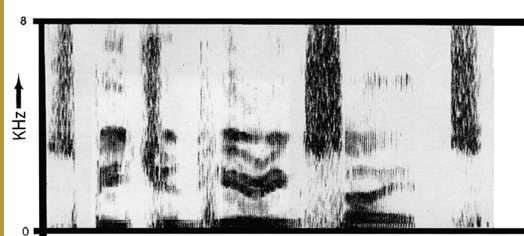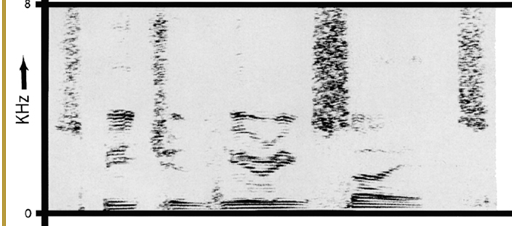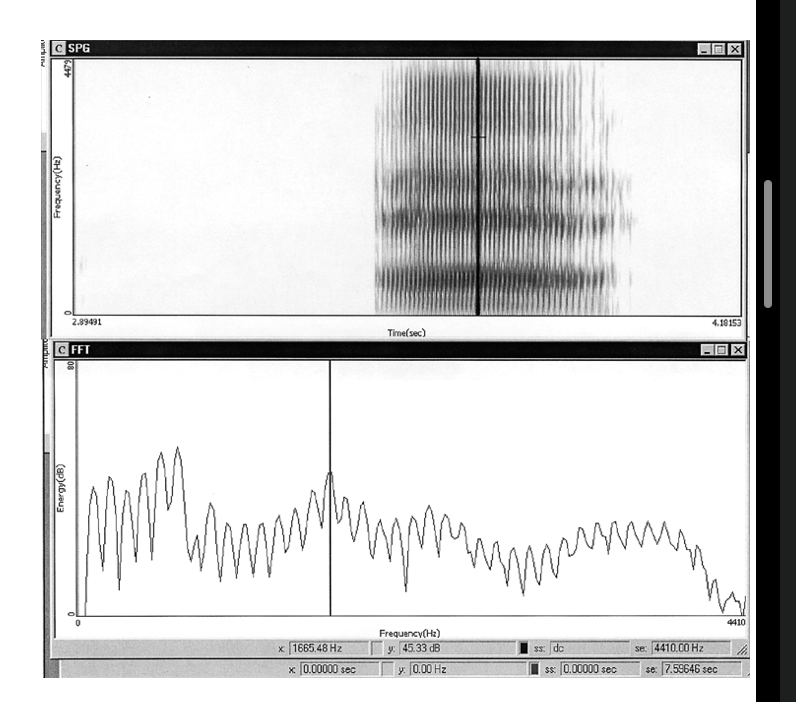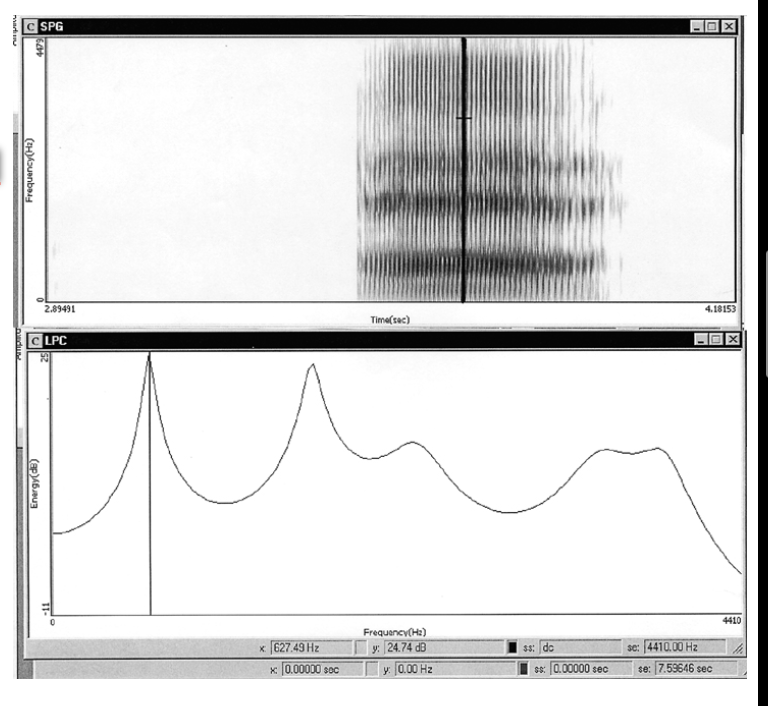Quiz #2
5.0(3)
5.0(3)
Card Sorting
1/70
Earn XP
Study Analytics
Name | Mastery | Learn | Test | Matching | Spaced |
|---|
No study sessions yet.
71 Terms
1
New cards
Descriptive Research
Observation of unmanipulated behavior
2
New cards
Experimental Research
Experimenter seeks to affect behavior b applying one or more experimental (independent) variable
3
New cards
Waveform Editing
* Digitized natural speech
* where the amplitude of the signal at each point in time is plotted against time.
* Speech does not sound mechanical or artificial, natural characteristics of speech (e.g., intonation, rhythm, and timbre of the speaker's voice) are preserved
* where the amplitude of the signal at each point in time is plotted against time.
* Speech does not sound mechanical or artificial, natural characteristics of speech (e.g., intonation, rhythm, and timbre of the speaker's voice) are preserved
4
New cards
Synthetic Speech
Computer-generated speech; sometimes refers to as text-to-speech
5
New cards
What is waveform analysis used for?
Used for: Pressure/amplitude changes
Uses: identifying individual phonemes, measuring vocal tract characteristics, and detecting speech disorders
Uses: identifying individual phonemes, measuring vocal tract characteristics, and detecting speech disorders
6
New cards
What does waveform display
* Changes of air pressure over time
* Complexity of the acoustic patterns
* (Where is the amplitude and where is the pressure)
* Complexity of the acoustic patterns
* (Where is the amplitude and where is the pressure)
7
New cards
Spectral Analysis
Spectrograms
8
New cards
What is a Spectrogram used for?
Visual representation of frequency changes of a speech signal over time; Can be used for speech analyses and research (e.g., detecting speech disorders, and measuring the timing and rhythm of speech)
9
New cards
Narrow-band spectrogram
* Displays narrow range of frequencies (i.e., between 0 and 4000 Hz)
* Purpose: Speech analysis in this frequency range.
* Purpose: Speech analysis in this frequency range.
10
New cards
Wide-band Spectrogram
* Displays a broader range of frequencies (i.e., typically between 0 and 20,000 Hz or higher)
* Purpose: Analyses of complex sounds (e.g., music or natural sounds, which may contain frequency components across a wide range)
* Purpose: Analyses of complex sounds (e.g., music or natural sounds, which may contain frequency components across a wide range)
11
New cards
Narrowband amplitude spectrum
* Provide analysis of the amplitude of a sound signal within a narrow frequency range
* Purpose: speech analysis and research to analyze the spectral characteristics of speech sounds
* Purpose: speech analysis and research to analyze the spectral characteristics of speech sounds
12
New cards
Wideband amplitude spectrum
* provide a general analysis of the amplitude (i.e., the strength or intensity) of a sound signal across a wide range of frequencies.
13
New cards
EMG (what it measures and what its used for)
* Measures electrical activity of neural signals to muscles
* valuable tool for speech analysis
* Yields information about the muscle activity and motor control involved in speech production
* Can be used to study different aspects of speech, including articulatory movements, coarticulation etc.
* valuable tool for speech analysis
* Yields information about the muscle activity and motor control involved in speech production
* Can be used to study different aspects of speech, including articulatory movements, coarticulation etc.
14
New cards
Spirometer and pneumotachography(what it measures and what its used for)
* measures airflow during nonspeech tasks
* Air-Flow during speech usually collected via face mask (pneumotachograph)
* Divided masks may be used to assess oral versus nasal airflow
* Air-Flow during speech usually collected via face mask (pneumotachograph)
* Divided masks may be used to assess oral versus nasal airflow
15
New cards
Nasometer (what it measures and what its used for)
* measures the amount of sound energy emitted from the nose during speech
* Used assess and treat speech disorders related to nasality, such as hypernasality or hyponasality.
* Used assess and treat speech disorders related to nasality, such as hypernasality or hyponasality.
16
New cards
Pneumography
* Measure changes in lung volume and airflow during breathing → useful to assess respiratory function during speech → important for diagnosing and treating speech disorders related to breathing
17
New cards
Laryngoscopy
* Examine the inside of the larynx and surrounding structures (e.g, vocal cords) with a laryngoscope
* Two Types: Indirect & Direct Laryngoscopy
* Used to diagnose/treat a variety of speech disorders (e.g., vocal cord nodules, polyps, or cancer); can also be used to evaluate vocal function and to assess the effects of voice therapy or surgical intervention.
* Two Types: Indirect & Direct Laryngoscopy
* Used to diagnose/treat a variety of speech disorders (e.g., vocal cord nodules, polyps, or cancer); can also be used to evaluate vocal function and to assess the effects of voice therapy or surgical intervention.
18
New cards
Indirect Laryngoscopy
non-invasive procedure that involves the use of a small mirror and a light source to visualize the larynx through the mouth
19
New cards
Direct Laryngoscopy
more invasive procedure that involves the use of a rigid or flexible laryngoscope to visualize the larynx and surrounding structures through the mouth or nose
20
New cards
Fiberoptic endoscopy
* Light source and camera are introduced through nose into laryngopharynx (larynx, pharynx, and upper airway)
* Used to diagnose/treat various disorders such as vocal cord nodules, polyps, or cysts, laryngitis or other inflammation of the larynx, laryngeal cancer swallowing disorders (dysphagia), upper airway obstruction or stenosis, chronic cough etc.
* Used to diagnose/treat various disorders such as vocal cord nodules, polyps, or cysts, laryngitis or other inflammation of the larynx, laryngeal cancer swallowing disorders (dysphagia), upper airway obstruction or stenosis, chronic cough etc.
21
New cards
Ultrasound
* Inaudible, high frequency sound waves are passed into tissues
* Waves reflect upon hitting an air boundary (e.g., in the oral cavity)
* Reconstructed echo pattern shows shape of structure(s)
* Used to assess the movement and position of the tongue, lips, and other articulators during speech important for diagnosis and treatment of various speech disorders (e.g., articulation disorders, apraxia of speech, dysarthria, resonance disorders such hypernasality or hyponasality, dysphagia, etc.)
* Waves reflect upon hitting an air boundary (e.g., in the oral cavity)
* Reconstructed echo pattern shows shape of structure(s)
* Used to assess the movement and position of the tongue, lips, and other articulators during speech important for diagnosis and treatment of various speech disorders (e.g., articulation disorders, apraxia of speech, dysarthria, resonance disorders such hypernasality or hyponasality, dysphagia, etc.)
22
New cards
Palatography(what it measures and what its used for)
* Measures contact between tongue and palate
* Ex: EPG
* Can be used to diagnose and treat articulation disorders
* Ex: EPG
* Can be used to diagnose and treat articulation disorders
23
New cards
what does MRI stand for?
Magnetic resonance imaging
24
New cards
MRI (what it measures and what its used for)
* Can be used for identifying brain regions involved in speech
* examining structural abnormalities associated with speech disorders, such as cerebral palsy, stroke, and traumatic brain injury
* examining structural abnormalities associated with speech disorders, such as cerebral palsy, stroke, and traumatic brain injury
25
New cards
Methods more easily incorporated into clinical use ___ ( 3)
* Ultrasound
* Pneumography
* Palatography
* Pneumography
* Palatography
26
New cards
Resonance
* occurs when an object or system vibrates at a certain frequency that matches the natural frequency of another object or system nearby. This causes the second object or system to vibrate with greater amplitude or intensity, amplifying the original vibration
* Resonance is reaction to sound
* Ex: pushing a swing
* Resonance is reaction to sound
* Ex: pushing a swing
27
New cards
What are the sound sources of speech
Phonatory/ Subglottal source & Supraglottal source
28
New cards
Phonatory / Subglottal source
vibration of vocal folds at the glottis; periodic (e.g., vowels
29
New cards
Supraglottal source
Air passes through larynx into upper vocal tract (mouth) where airstream is modified; aperiodic (e.g., some consonants like /f/, /p/)
30
New cards
How do we alter the spaces within the human vocal tract?
By movement of the articulators
* Tongue, pharynx, palate, lips, and jaw
* Tongue, pharynx, palate, lips, and jaw
31
New cards
Resonances of the vocal tract are called ____.
formants
32
New cards
Whether the source is subglottal (glottis) or supraglottal (mouth), _________________________________________.
the sound is filtered by the resonant frequencies of the vocal tract
33
New cards
Large Resonating Cavities
pharyngeal, oral, and nasal cavities
34
New cards
Small Resonating cavities
air spaces between the lips, between the teeth and cheeks, and within the larynx and trachea
35
New cards
Oral Cavity
* Formed by the space between the teeth, upper and lower jaws (maxilla, mandible), and tongue
36
New cards
Major oral landmarks for speech:
* Teeth (especially incisors): Production of dental sounds such as \[t d\]
* Alveolar ridge: Anterior region of hard palate; production of alveolar sounds such as \[t d n s\]
* Velum (soft palate): Production of velar sounds such as \[k g ŋ\]
* Alveolar ridge: Anterior region of hard palate; production of alveolar sounds such as \[t d n s\]
* Velum (soft palate): Production of velar sounds such as \[k g ŋ\]
37
New cards
Speech, language, & instrumentation
* Instruments can measure many things:
* Muscular activity
* Movements associated with respiration, phonation, and articulation
* Structures involved in speech (e.g., the vocal tract) and language (e.g., the brain)
* Nervous system activity during speaking and listening
* Muscular activity
* Movements associated with respiration, phonation, and articulation
* Structures involved in speech (e.g., the vocal tract) and language (e.g., the brain)
* Nervous system activity during speaking and listening
38
New cards
velum ( soft palate)
* Closes the velopharyngeal (VP) port
* Separates nasal and pharyngeal cavities
* Used for oral speech sounds
* Separates nasal and pharyngeal cavities
* Used for oral speech sounds
39
New cards
t/f the tongue consists of extrinsic and intrinsic muscles.
true
40
New cards
t/f The velum is Lowered for oral sounds and higher for nasal sounds.
false, Lowered for nasal sounds and higher for oral sounds!
41
New cards
What does F1 stand for?
Tongue height/mouth opening
42
New cards
What does F2 stand for?
Tongue placement in oral cavity
43
New cards
Source, Filter, & Speech
* Speech mechanism is a combination of source (vocal fold vibrations) and filter (resonant response of the supraglottal vocal tract; shaping of mouth for sound waves)
* At any given time in the production of a vowel, the spectrum of the sound radiated from the lips can be attributed to the source (vibrations) and the filter (shaping)
* At any given time in the production of a vowel, the spectrum of the sound radiated from the lips can be attributed to the source (vibrations) and the filter (shaping)
44
New cards
power, source, filter
power: the lungs
source: vocal tract
Filter: articulation for each sound
source: vocal tract
Filter: articulation for each sound
45
New cards
Relative Speakers
patterns of formant values are consistent across speakers; for example, \[i\] has a low F1, and a high F2
46
New cards
Absolute Speakers
* formant values vary across speakers:
* Speakers differ in overall vocal-tract length
* Parts of the vocal tract may differ in size: The pharynx is proportionally smaller in women than men
* Speakers of the same language vary in dialect
* Speakers differ in overall vocal-tract length
* Parts of the vocal tract may differ in size: The pharynx is proportionally smaller in women than men
* Speakers of the same language vary in dialect
47
New cards
Traditional classification based on impressions of articulation:
* Tongue shape
* tongue position
* Lip posture
* tongue position
* Lip posture
48
New cards
Vowels in Clinical Populations
* Congenitally deaf speakers often have deviant vowel spaces:
* Jaw and tongue placements are more constrained than in hearing speakers
* The range of formant values is not as great as in hearing speakers
* Impaired vowel production may be evident in apraxia of speech, dysarthria, and cerebral palsy
* Foreign accents may involve errors in vowel production
* Visual feedback (e.g., via spectrograms) may help speakers improve vowel production
* Jaw and tongue placements are more constrained than in hearing speakers
* The range of formant values is not as great as in hearing speakers
* Impaired vowel production may be evident in apraxia of speech, dysarthria, and cerebral palsy
* Foreign accents may involve errors in vowel production
* Visual feedback (e.g., via spectrograms) may help speakers improve vowel production
49
New cards
Tense Vowels
* (e.g., \[i e o u\]):
* Involve more extreme articulations
* Have longer durations
* Can occur in open syllables (e.g., CV)
* Involve more extreme articulations
* Have longer durations
* Can occur in open syllables (e.g., CV)
50
New cards
Lax Vowels
* \[e.g., ε ʌ ʊ\]
* Have less extreme articulatory postures
* Are shorter in duration
* Occur only in closed syllables (e.g., CVC)
* Have less extreme articulatory postures
* Are shorter in duration
* Occur only in closed syllables (e.g., CVC)
51
New cards
How are constant sounds different?
* Differences in the source and filter:
* Constrictions used to produce consonants are usually more extreme than those for vowels
* Various configurations of the vocal tract generate different combinations of resonant frequencies (formants) for each sound
* Differences in the ways the sources of sound are used in the production of consonants
* Constrictions used to produce consonants are usually more extreme than those for vowels
* Various configurations of the vocal tract generate different combinations of resonant frequencies (formants) for each sound
* Differences in the ways the sources of sound are used in the production of consonants
52
New cards
Difference between voice (periodic)and voiceless (aperiodic)sounds?
* is the presence or absence of vocal fold vibration during their production.
53
New cards
Examples of Voiced Sounds
/b/, /d/, /g/, /v/, /z/, /l/, and /m/
54
New cards
Examples of voiceless sounds
/p/, /t/, /k/, /f/, /s/, /ʃ/, and /θ/ (as in "thin")
55
New cards
oral sounds
* produced by creating a constriction in the oral cavity, or mouth; this constriction blocks or modifies the flow of air as it moves through the mouth, resulting in different sounds
* includes: stops; fricatives ; affricatives
* Soft palate elevated against posterior pharyngeal wall
* Velopharyngeal (VP) port closed
* Levator palatini muscle active
* Degree of VP closure varies with phonetic context
* includes: stops; fricatives ; affricatives
* Soft palate elevated against posterior pharyngeal wall
* Velopharyngeal (VP) port closed
* Levator palatini muscle active
* Degree of VP closure varies with phonetic context
56
New cards
Nasal Sounds
* produced by lowering the soft palate to allow air to flow through the nasal cavity as well as the mouth, resulting in a different sound quality.
* Nasals and the velum
* Require open VP port (lowered velum):
* Levator palatini muscle is relaxed
* Palatoglossus muscle may actively lower velum
* Nasal cavities form a resonant chamber
* At the lips \[m\]
* At the alveolar ridge \[n\]
* At the soft palate \[ŋ\]
* Nasals and the velum
* Require open VP port (lowered velum):
* Levator palatini muscle is relaxed
* Palatoglossus muscle may actively lower velum
* Nasal cavities form a resonant chamber
* At the lips \[m\]
* At the alveolar ridge \[n\]
* At the soft palate \[ŋ\]
57
New cards
2 constant types
Sonoranta & Obstruents
58
New cards
sonorants
* are a group of speech sounds that are produced with a relatively open vocal tract, allowing for the free flow of air through the mouth.
* Nasals
* Liquids
* Glides
* Nasals
* Liquids
* Glides
59
New cards
Obstruents
* are a group of speech sounds that are produced by creating a constriction or obstruction in the vocal tract
* Stops
* Fricatives
* Affricatives
* Stops
* Fricatives
* Affricatives
60
New cards
Fricatives can be formed in what places?
* Labiodental \[f v\] *f*ew / *v*iew
* Linguadental \[Ө ð\] ba*th* / ba*th*e
* Alveolar \[s z\] *s*ue / zoo
* Postalveolar \[∫ 3\] *sh*y / lei*s*ure
* Linguadental \[Ө ð\] ba*th* / ba*th*e
* Alveolar \[s z\] *s*ue / zoo
* Postalveolar \[∫ 3\] *sh*y / lei*s*ure
61
New cards
How are stops produced?
* by a complete closure of the vocal tract, followed by a sudden release of air
* Examples include /p/, /b/, /t/, /d/, /k/, and /g/
* Examples include /p/, /b/, /t/, /d/, /k/, and /g/
62
New cards
obstruents in clinical populations
* Hyponasality or hypernasality may result from problems with velopharyngeal (VP) control:
* Cleft palate
* Motor speech disorders
* Poor control of VP mechanism may impair production of oral obstruents that require buildup of intraoral air pressure
* Problems of interarticulator timing in motor speech disorders may affect VOT and stop voicing contrasts
* Cleft palate
* Motor speech disorders
* Poor control of VP mechanism may impair production of oral obstruents that require buildup of intraoral air pressure
* Problems of interarticulator timing in motor speech disorders may affect VOT and stop voicing contrasts
63
New cards
4 elements of prosody
* Stress
* intonation
* duration
* juncture
* intonation
* duration
* juncture
64
New cards
factors that impact duration:
* Intrinsic duration: Some sounds are naturally longer than others (e.g., diphthongs are longer; lax vowels are shorter)
* Phonetic context: For example, vowels preceding voiced consonants are longer in duration than vowels preceding voiceless consonants: Compare the /i/ vowels in “leaf” and “leave”
* Syllables at the end of a major syntactic unit display what is called phrase-final or pre-pausal lengthening
* Phonetic context: For example, vowels preceding voiced consonants are longer in duration than vowels preceding voiceless consonants: Compare the /i/ vowels in “leaf” and “leave”
* Syllables at the end of a major syntactic unit display what is called phrase-final or pre-pausal lengthening
65
New cards
Stress
the degree of emphasis on individual syllables within words
66
New cards
Intonation
* Provides information on speaker affect: Extreme f0 changes associated with heightened emotion
* can differentiate question vs statements
* can differentiate question vs statements
67
New cards
Juncture
the way sounds are joined to (or separated from) one another
68
New cards

Narrowband or wideband spectrogram??
Wideband
69
New cards

Narrowband or wideband spectrogram??
Narrowband
70
New cards

Narrowband ampltiude or Wideband amplitude spectrum?
Narrowband ampltiude
71
New cards

Narrowband ampltiude or Wideband amplitude spectrum?
Wideband amplitude spectrum